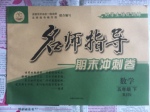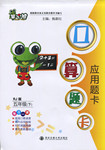题目内容
读下面这篇短文,然后根据短文内容回答问题(每题不超过五个单词)
John Brown, an office worker, lives in Washington. He inherited(继承) $ 1,000,000 when he was 23. He didn't feel happy at all. His college friends were looking for their first jobs, but he didn't have to. John decided to keep living a simple life like everyone else. He didn't tell any of his friends and gave $ 100,000 of his money to a charity(慈善团体) that helped poor children to live better lives. Today he is 36, he still wears cheap shoes and clothes and owns a small car only, but he is much happier.
Up to now John has helped 15 children from poor countries all over the world, $ 200 a month for each. The child does not receive the money in cash(现金). The money pays for the child's school expenses, food, medical care and clothing. John receives a report each year on the child's progress. They can write to each other, but usually the children do not speak English.
When John first heard about these children, he wanted to help them. “It was not anything special.” he said. “Until I had the chance to go to these countries and meet the children I was helping, I did not know anything about the type of life they had.”
Once John went to meet a little girl in Africa, He said that the meeting was very exciting. “When I met her, I felt very, very happy.” he said. “I saw that the money was used for a very good plan. It brought me closer to the child in a way that giving money alone cannot.” “I want to do everything I can. I will go on helping those children in need.” he added.
Questions:
1.What kind of life is John living?
He is living a ________.
2.Did John want to look for a job or stay at home after he got the money?
________________________________.
3.The child receives the money in cash, doesn't he?
________________________________.
4.Why did John say that the meeting with the little girl was very exciting?
Because he saw his money was well used and this made him ________.
解析:
|
解答: 1.simple life2.To stay at home 3.No, he doesn't 4.happy or closer to the child |
提示:
|
名师导引:这篇文章主要介绍一位青年人对待金钱的态度。题 (1)可以通过关键词来猜测;题(2)要理解通过综合、全面的思考来作答;题(3)通过关键句子来表示;题(4)为细节理解。 |

 名师指导期末冲刺卷系列答案
名师指导期末冲刺卷系列答案 开心蛙口算题卡系列答案
开心蛙口算题卡系列答案